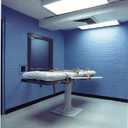
California’s death row — the largest in the country — is expanding beyond the capacity of San Quentin State Prison to hold it. In response, Governor Jerry Brown has proposed a $3.2 million expenditure to make about 100 new cells available to incarcerate death row inmates. California has not executed any death-row prisoner since 2006. Court rulings have barred the state from using its lethal injection protocol and, last July, in the case of Jones v. Chappell, a federal district court declared the State’s death penalty statute unconstitutional as a result of systemic delays in providing appellate review of death sentences. In the nine years since its last execution, California’s death row has grown from 646 to 751 inmates. The death-row facilities at San Quentin, which can house 715 inmates, currently hold 708. The remaining inmates include 20 women housed in a separate facility and 23 inmates held elsewhere for court hearings, in long-term medical facilities, or in prisons in other states. Under the governor’s new proposal, death row prisoners could be held in another housing unit at San Quentin, where cells have recently become available as the state releases low-level offenders under a measure approved by voters in 2014. Gov. Brown asked the legislature to approve the additional outlays to increase security and staff at the prison. State Senator Loni Hancock, head of the budget subcommittee that will consider Brown’s proposal this month, said, “California is in a Catch-22 situation. We are required by the Courts to address prison overcrowding and we are required by law to provide certain minimum conditions for housing death penalty inmates. The Legislature can’t avoid its responsibilities in these areas, even though the courts are currently considering the constitutionality of the death penalty, and I hope will agree to end it.”
(P. St. John, “California’s death row, with no executions in sight, runs out of room,” Los Angeles Times, March 30, 2015.) See Costs and California.



